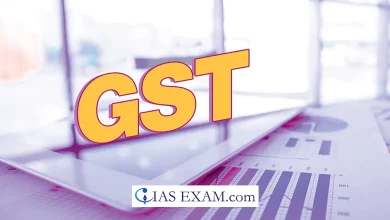Daily Current Affairs for UPSC
Online Payment Aggregators (PA)
Syllabus- Indian Economy [GS Paper 3]

Context- Under the Payment and Settlement Systems Act, 2007 (PSS Act), the Reserve Bank of India (RBI) has recently granted preliminary approval to 32 businesses to operate as Online Payment Aggregators (PA).
Key Highlights
- The RBI is designated as the authority for the regulation and supervision of payment systems in India under the PSS Act of 2007, which was passed in 2007.
- In theory, approval means that certain conditions or assumptions have been met. However, additional information or steps may be needed before final approval is given.
What is an Aggregator of Payments?
-
- Companies that act as middlemen between a customer and a merchant in order to facilitate online payments are known as online payment aggregators.
- In March 2020, the RBI issued Guidelines for Regulating Payment Agencies and Payment Gateways.
- Functions:
-
-
- Customers typically have access to a variety of payment options, including e-wallets, bank transfers, and credit and debit cards.
- In order to guarantee the safety and dependability of transactions, payment aggregators collect and process payment data.
- Businesses can avoid having to set up and manage their own complicated and expensive payment processing systems by using a payment aggregator.
- Payment aggregators include Square, Amazon Pay, PayPal, Stripe, and others.
-
- Key Features:
-
- Multiple Methods of Payment: Customers can pay for goods and services more easily thanks to payment aggregators, which provide them with a variety of payment options.
- Processing of Secure Payments: Advanced security measures are used by payment aggregators to guarantee the safety and security of transactions.
- Prevention and detection of fraud: Algorithms and machine learning are used by payment aggregators to find and stop fraud, lowering the likelihood of chargebacks and other payment disputes.
- Reporting and Tracking of Payments: Businesses can now more easily manage their finances and reconcile their accounts thanks to the detailed reports that payment aggregators provide on payment transactions.
- Compatibility with Other Systems: Accounting software and inventory management systems, for example, can be integrated with payment aggregators to simplify the payment process and simplify business operations.
Types:
- Bank Payment Aggregators:
-
-
- They are difficult to integrate and have high setup costs.
- They lack comprehensive reporting capabilities as well as numerous popular payment options. Bank payment aggregators are not suitable for startups or small businesses due to their high cost.
- e.g.; Razorpay and CCAvenue.
-
- Third-Party Payment Aggregators:
-
-
- Nowadays, third-party PAs have grown in popularity because they provide businesses with innovative payment options.
- A comprehensive dashboard, simple merchant onboarding, and quick customer support are among their user-friendly features.
- e.g.; Google Pay, Stripe, and PayPal
-
- RBI’s Criteria for Approving an Entity as Payment Aggregator
-
- Only companies that have been approved by the RBI are permitted to acquire merchant payment services under the payment aggregator framework.
- In the first year of application, a company must have a minimum net worth of Rs 15 crore and a minimum net worth of Rs 25 crore by the second year.
- Additionally, it must adhere to international payment security standards.
What distinguishes the Payment Aggregator from the Payment Gateway?
- A software application known as a payment gateway enables an online store or merchant to accept payment from customers by connecting them to a payment processor.
- On the other hand, payment aggregators are intermediaries that provide a single platform for connecting numerous merchants to various payment processors.
- The fact that a payment aggregator manages funds while a payment gateway provides technology is the primary distinction between the two.
- Although payment gateways can be provided by payment aggregators, this is not the case.
What other steps has the RBI taken to regulate fintech companies?
- RBI’s Fintech Regulatory Sandbox:
-
-
- Established in 2018 with the primary objective of providing a controlled regulatory setting for product testing in the fintech sector.
-
- Payment System Operators license:
-
-
- The purpose of this initiative was to investigate India’s ever-expanding payments landscape.
- Digital Lending Norms:
- RBI’s Payment Vision for 2025: All digital loans must be paid back only through bank accounts of regulated entities, without passing through lending service providers (LSPs).
-
- RBI’s Payment Vision 2025:
-
-
- It aims to advance the payment systems to the point where they provide users with convenient, affordable payment options that can be used at any time and from any location.
- It expands on the initiatives outlined in Payments Vision 2019-21.
-
- The upcoming White List of RBI:
-
- To stop the growing number of wrongdoings in the digital lending ecosystem, the RBI has created a “white-list” of digital lending apps called the “List of Approved Lenders.”





.png)



